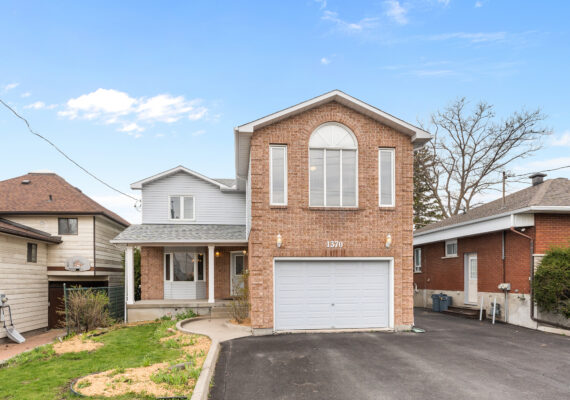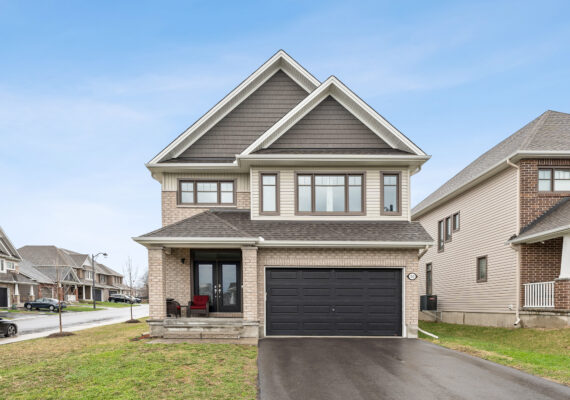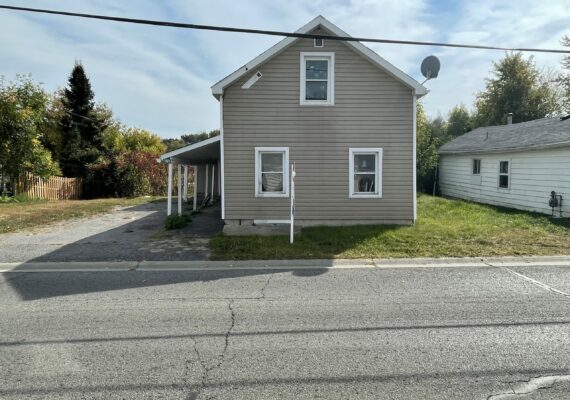
Purchasing a property in the winter can be a pretty chill idea. Buying in the wintertime can be advantageous for both home buyers and sellers—with a smaller buying pool, the (typically) off-season market can lend more serious offers from motivated purchasers who benefit from less competition. However, wintery weather can make it tricky to assess a home when you can’t fully see the condition of the property under layers of ice and snow.
Don’t overlook the home’s exterior
A home’s first impression from the sidewalk is always important to consider when buying, and it’s no different during the winter.
It’s crucial to inspect the outside of the home in the winter time. You want to make sure the property’s driveway, outdoor stairs, and sidewalks are shoveled so you can clearly see their condition. A blanket of fluffy snow can also make it a challenge to gauge the property’s roof and grading to see if water is running away from the house correctly.
Sometimes it can be difficult to see the condition of the roof or the shingles if they’re covered in snow, and then if all of the other roofs [in the neighbourhood] are covered in snow and yours isn’t, it means there’s probably not enough insulation—heat is getting out of the house that shouldn’t be.
Landscaping costs for trees and grass can add up, so it’s best to get a sense of the condition of the back and front yards, too. Buyers should ask for pictures of the home in the summertime to assess the state of the yard, gardens, and any outdoor structures such as pools.
You want to know what you’re buying, and the problem with [the winter], everything is covered, you don’t know if there’s grass, if there are weeds, if there’s interlock, if there’s not interlock. Trying to get some recent summer pictures is absolutely key.
Examine the interiors from floor to ceiling
When touring the inside of the property, you’ll want to keep your eyes peeled for any wintertime red flags that could indicate issues within the house.
Look for any signs of drafts, fogging, or condensation in the windows that could point to broken seals, allowing cold air to enter the home.
Looking in the wintertime, you get to see if there are any drafts in the windows, can you feel cold air coming through? Do you see any leaking? Are you seeing any water stains?
As colder weather tends to dry out rooms, a buyer will want to look for gaping or splitting in hardwood floors, which can speak to the home’s humidity levels. Dryness can cause things to shrink slightly, so a purchaser should inspect the home to ensure interior doors and cupboards can close properly. By feeling the interior walls, you can also assess if they are cold to the touch and therefore poorly insulated—some homes may be double bricked and not insulated.
When viewing a home in the winter, purchasers should monitor for big differences in temperature between rooms, a sign there could be ventilation problems to address.
You’re looking for signs of chilly rooms, drafty rooms, or even rooms that are really warm. Why are they really warm in the winter time unless the heat is punched up? You’re looking for differences in rooms that will be a tell-tale sign as to whether there are issues.
Inspect your home utility systems and out-of-season amenities
The winter often calls for homeowners to shut down seasonal home amenities like pools and cooling systems, but this shouldn’t mean a buyer should skip on investigating these features.
Buyers won’t be able to turn on and test the home’s air conditioning in the winter to confirm if it’s working properly or not. Because of this, it’s important for the buyer to do their due diligence and ask the seller and their agent questions about the state of home systems such as the furnace, septic, pool parts, and other property features.
Quite often, additions aren’t done with permits and pipes were not insulated properly, so in really cold months, they freeze a little bit. So you want to run the water on all of the taps and make sure you’re not seeing any of that.
For pools and hot tubs, you may want to request copies of receipts, maintenance reports, and proof of professional services to ensure they—as well as all of the other home systems—are in good working order when you purchase the property. As always, opting for a home inspection can be a way to ensure a professional can get a deeper understanding of the property, including in areas like the basement and attic.
If you’re looking to buy a home this winter, enlist the help of an experienced Pilon Group Agent who can guide you through the process and help you to flag any property issues that may present themselves.
Pilon Real Estate Group Featured Listings: Click here!
We Keep You Covered When You Buy a Home With Our 12 Month Buyer Protection Plan!
Details at: www.HomeBuyerProtectionPlan.ca
Free Home Search With Proprietary MLS Access – New Listings – Faster Updates And More Accurate Data!
Find Homes Now: www.FindOttawaHomesForSale.com
Find Out How We Get Our Sellers More: Click here!
RE/MAX Hallmark Pilon Group Realty
www.PilonGroup.com
Email: Info@PilonGroup.com
Direct: 613.909.8100






